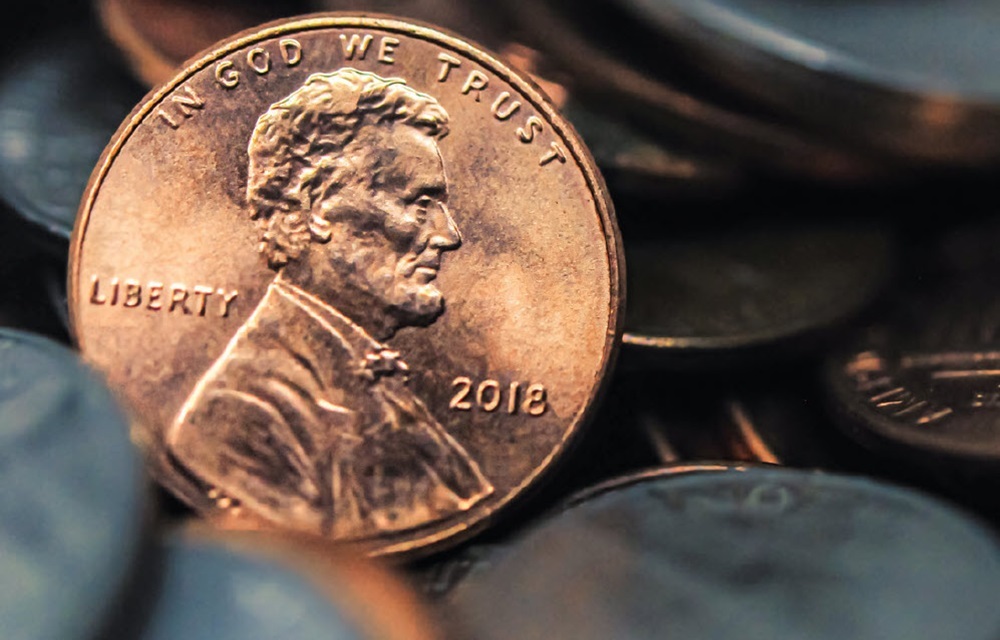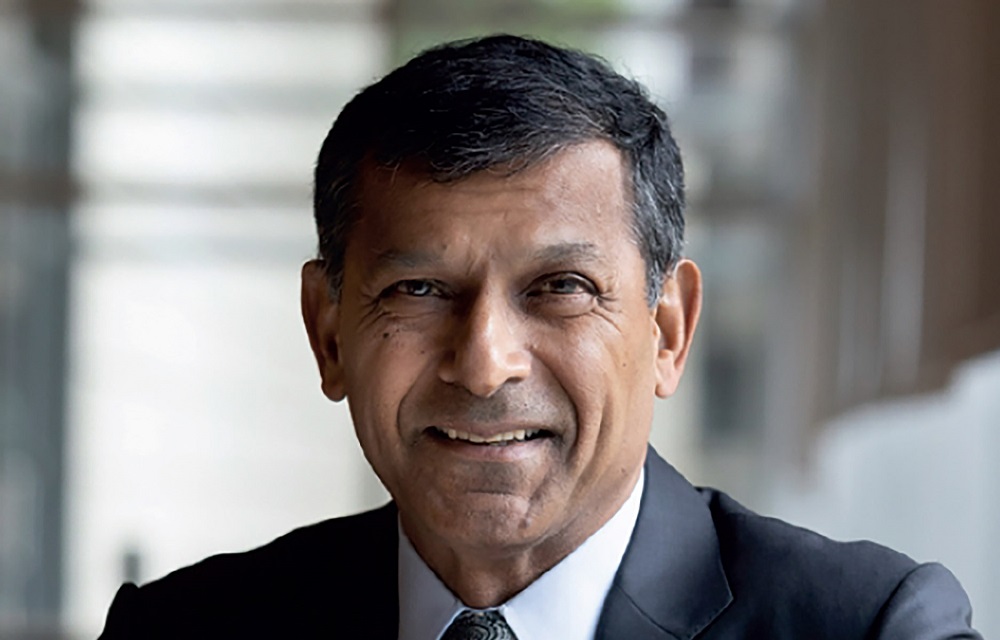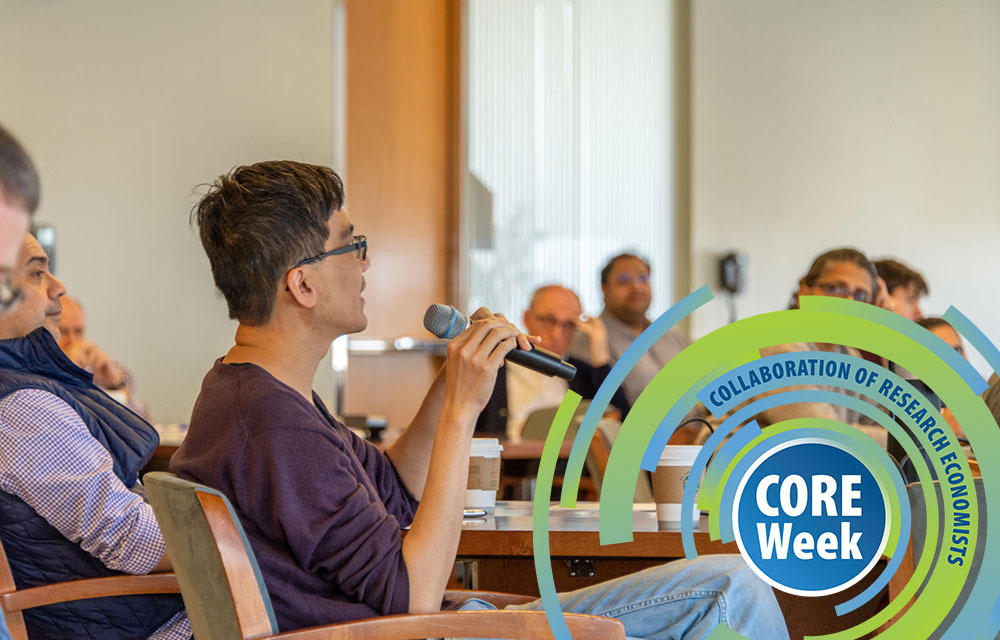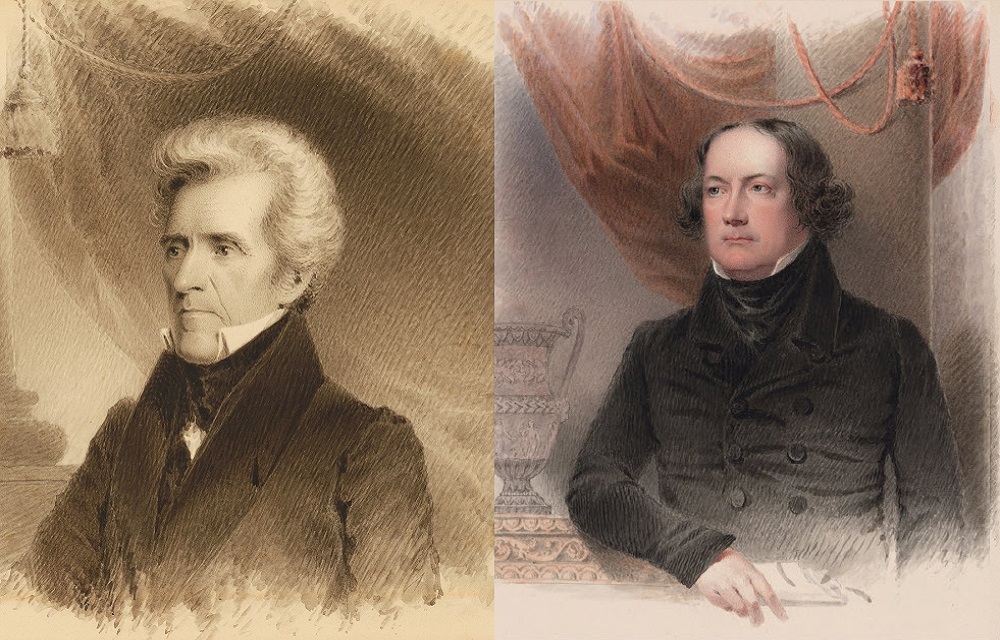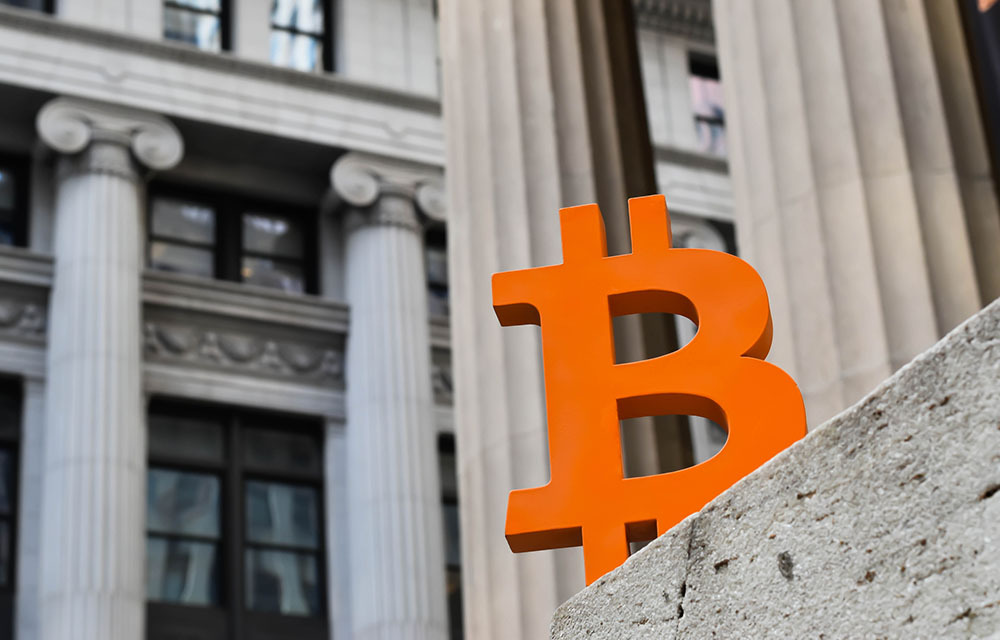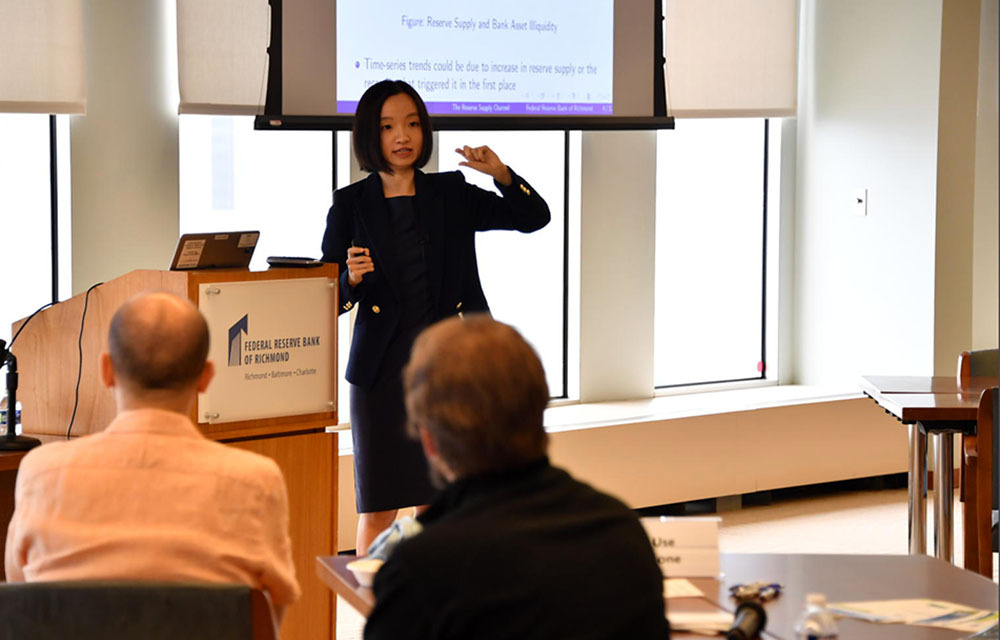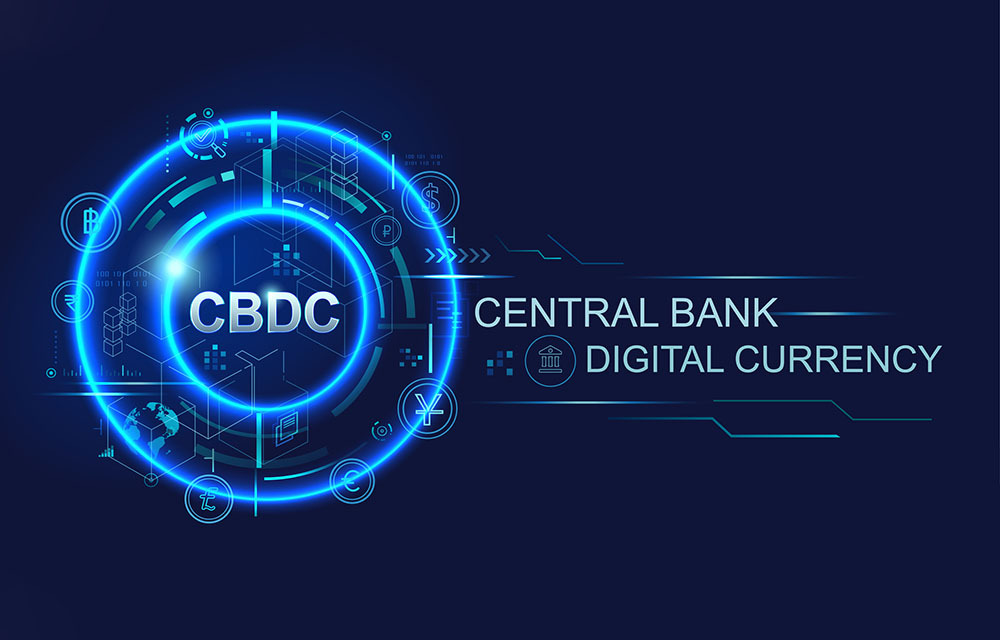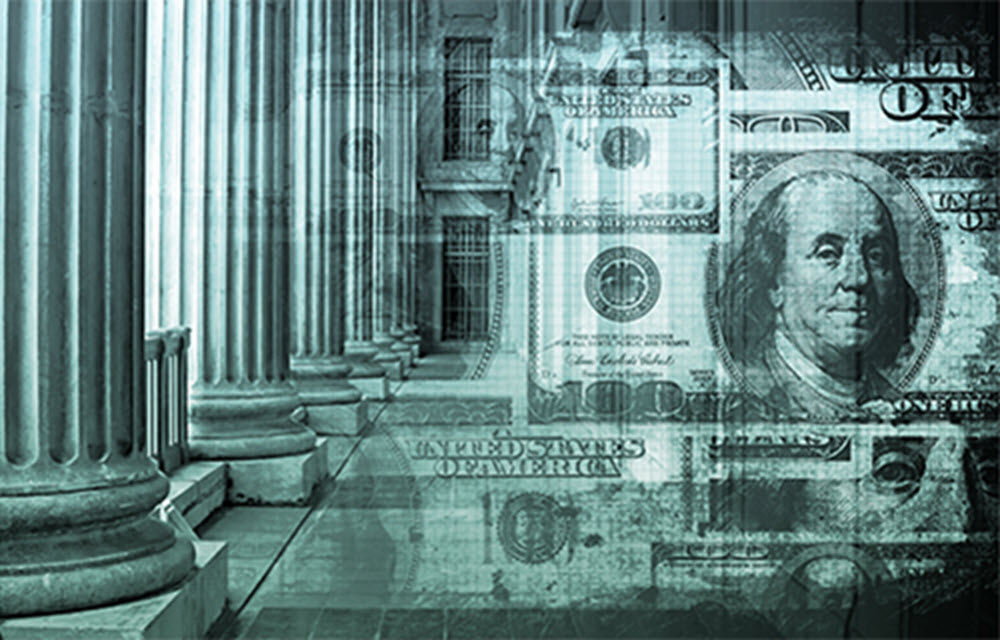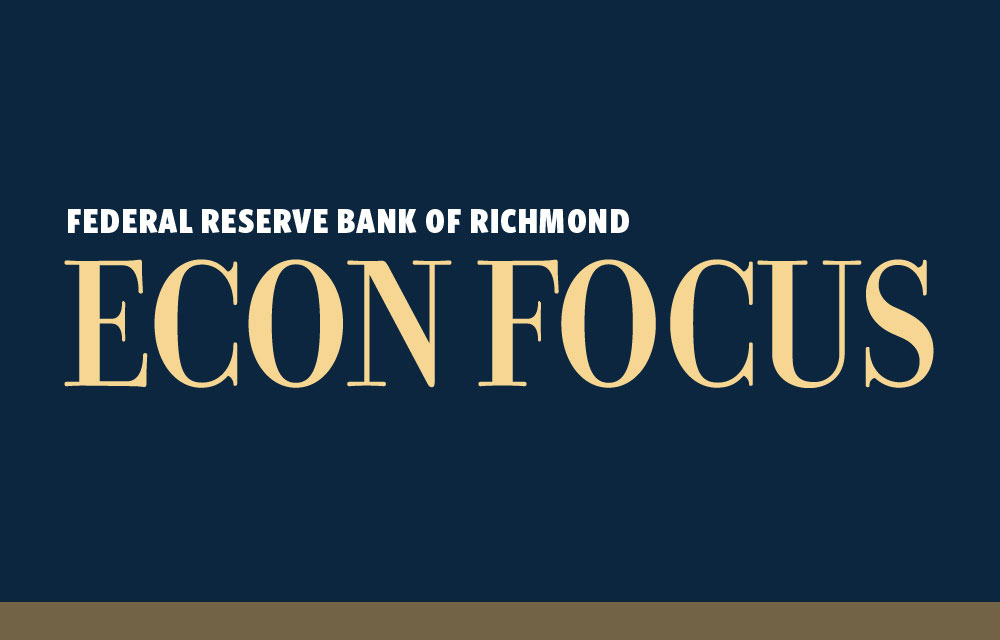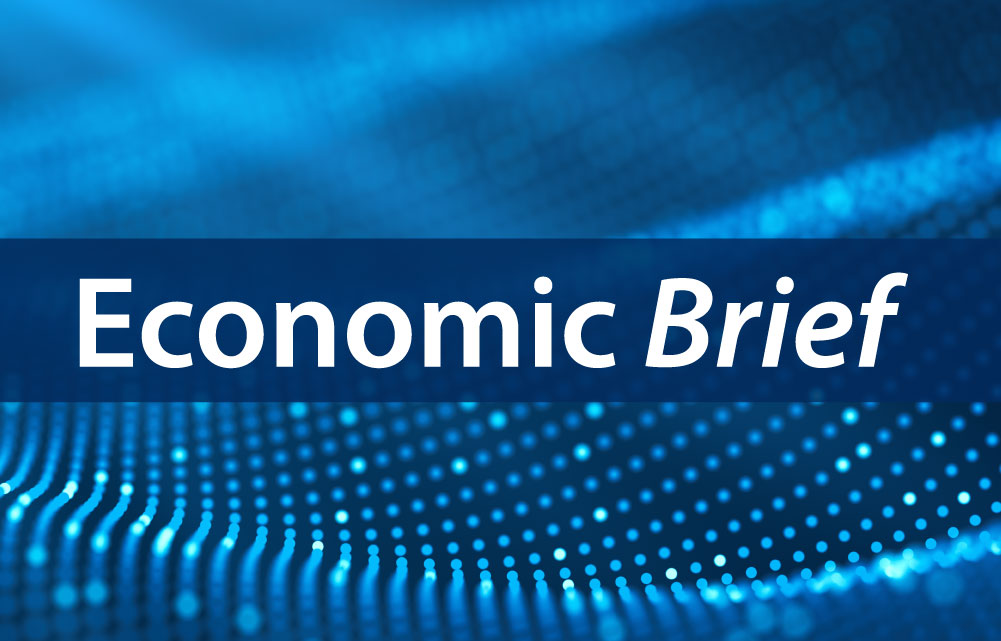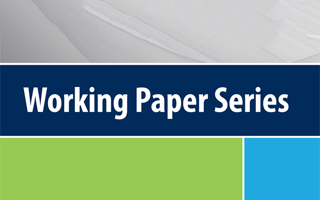Policymakers have proposed legislation that would mandate greater network competition in credit card transactions with the goal of reducing swipe fees paid by merchants.
Payments

Explore our research into the data, trends and innovations of payments and payment systems, including cash, checks, credit and debit cards.
 Updating Results
Updating Results
Doug Borland and Stephanie Mehlhouse share insights from the 2024 Survey and Diary of Consumer Payment Choice, which was compiled by the Federal Reserve to provide a comprehensive picture of payment preferences and behavior in the United States. Borland is assistant vice president of cash services and Mehlhouse is a senior cash manager, both based at the Charlotte office of the Federal Reserve Bank of Richmond.
From stolen checks to "deepfake" scams, fraudsters are costing businesses, banks, and individuals billions every year.
The U.S. Treasury Department says it will stop producing the penny in 2026. What could the coin's demise mean for the government and consumers?
A "rounding tax" could affect consumers, especially if attention turns to phasing out the nickel as well.
Zhu Wang and Russell Wong
Vanity McDaniel and Jennifer Stadler provide a snapshot of how consumers pay for goods and services today and reflect on the latest technology trends in the U.S. payments system, including contactless payments, digital wallets, "buy now, pay later," instant payments, and the use of artificial intelligence. McDaniel is a senior payments business advisor at the Federal Reserve Bank of Richmond and Stadler is executive vice president of marketing and membership at PaymentsFirst, a payments industry association.
What impact could "buy now, pay later" have on other payment forms and on financial stability as a whole?
A fast-growing alternative to credit cards encourages consumers to spend and borrow more.
Avani Pradhan
Economist Raghuram Rajan on leading a central bank, creating a digital payment system, and India's future in professional services.
David A. Price
Tim Sablik, host of the Speaking of the Economy podcast, reviews the five most popular episodes of 2023 that explored topics beyond inflation and monetary policy.
In July, the Fed launched its first new payment service in more than 40 years. FedNow enables money to move instantaneously from sender to recipient 24 hours a day, seven days a week — weekends and holidays included.
In his July 1832 veto message of the bill rechartering the Second Bank of the United States, President Andrew Jackson triggered the demise of America's second central bank with a stroke of his veto pen.
Vanity McDaniel provides an update on FedNow, the first new payments platform launched by the Federal Reserve in 50 years, and why the Fed decided to facilitate real-time or "instant" payments in the financial system. McDaniel is a senior payments business advisor at the Federal Reserve Bank of Richmond.
Russell Wong discusses the emergence of stablecoin as an alternative to more volatile cryptocurrencies in the financial system. Wong is a senior economist at the Federal Reserve Bank of Richmond.
How might a CBDC alter the banking system? How does credit easing affect bank runs? These and other questions were addressed during a recent Richmond Fed conference.
John Mullin and Matthew Wells
Properly regulating stablecoins could achieve the same objectives as issuing a central bank digital currency.
When confidence in Terra's currencies was shaken, it created a freefall that couldn't be stopped.
Perhaps history can be a guide on whether central banks should issue digital currencies.
Even exploring a CBDC without ultimately issuing one can provide significant benefits.
Policymakers are weighing the possible benefits and risks of adopting a U.S. central bank digital currency (CBDC).
John Mullin
Vanity McDaniel and Zhu Wang review the Federal Reserve's important role in the payments system, from cash and check processing to supporting innovations in electronic payments. McDaniel is a senior payments business analyst in the Payments Outreach group and Wang is vice president for research in financial and payments systems in the Research Department at the Richmond Fed.
The recent removal of several Russian banks from SWIFT has sparked questions about unintended consequences.
In the last year, more than 10 percent of Americans have reportedly traded or bought cryptocurrencies, in part fueled by increased institutional adoption and public attention in the media. This increased engagement has captured the attention of both the general public and central bankers alike.
The U.S. is considered a leader in payment services, yet it has fallen behind countries like China and Kenya in mobile payment innovation.
Pengfei Han and Zhu Wang
Facebook and Amazon are examining creating digital currencies, like Alibaba has. What drives platforms to develop these currencies, and should central banks be worried?
Jonathan Chiu, Tim Sablik and Russell Wong
The U.S. might benefit from replacing physical cash with central bank digital currency, but first the Fed must resolve several policy and implementation issues.
We construct a dynamic model with sequential payment innovations to explain this phenomenon, which uncovers how advanced economies' past success in adopting card-payment technology holds them back in the mobile-payment race.
Pengfei Han and Zhu Wang
This paper studies a platform's business model choice between accepting cash and issuing tokens, as well as the implications for welfare, resiliency, and interoperability.
Jonathan Chiu and Russell Wong
Despite new technologies for electronic payments, cash has never been more popular. What's driving the demand?
Research at the Richmond Fed has exploited a large dataset of cash, check, credit card, and debit card transactions at a nationwide retail chain to examine consumer payment choice based on transaction size and location, day-of-week and day-of-month cycles, and longer-term trends.
David A. Price, Zhu Wang and Alexander L. Wolman
New survey results suggest that the regulation has had limited and unequal effects on merchants. This Economic Brief discusses the causes of these findings as well as the implications of the regulation for end users.
Renee Haltom and Zhu Wang
A white paper published by the Fed in January advocates adding a new option to the payment system: a real-time electronic payment mechanism that would enable consumers and businesses to make payments instantly, cheaply, and safely.
John A. Weinberg
(Emeritus)
Richmond Fed president Jeffrey M. Lacker spoke about the use of the Bankruptcy Code to resolve large complex financial institutions.
Jeffrey M. Lacker
President, Federal Reserve Bank of Richmond
Are we losing the fight against next-gen bank robbers? The Fed's study found that payment cards were used in 92 percent of fraudulent transactions, with checks and electronic check transfers making up the remainder.
Richmond Fed President Jeffrey M. Lacker addressed business leaders during a luncheon hosted by the Rotary Club of Charlotte in Charlotte, N.C.
Jeffrey M. Lacker
President, Federal Reserve Bank of Richmond
Using three years of transactions data from a discount retailer with thousands of stores, we study payment variation along three dimensions: transaction size and location; weekly and monthly frequencies; and longer time horizons.
Many merchants have complained that the fees far exceed issuers' costs for processing such transactions. In response to those complaints, Congress directed the Federal Reserve to impose a cap on debit card interchange fees.
Tim Sablik and Zhu Wang
This paper studies intended and unintended consequences of price cap regulation in the two-sided payment card market.
Jeffrey Lacker, president of the Federal Reserve Bank of Richmond, addressed the Council on Foreign Relations on May, 9, 2013, as part of the C. Peter McColough Series on International Economics.
Jeffrey M. Lacker
President, Federal Reserve Bank of Richmond
Why do debit card networks base their fees on a percentage of transaction amounts when the marginal cost of executing a transaction does not vary by amount?
David A. Price and Zhu Wang
This paper explains why platforms such as Amazon and Visa rely predominantly on ad-valorem fees, fees which increase proportionally with transaction prices. It also provides a new explanation for why ad-valorem sales taxes are more desirable than specific taxes.
Zhu Wang and Julian Wright
This paper provides a new theory for two-sided payment card markets. Adopting payment cards requires consumers and merchants to pay a fixed cost, but yields a lower marginal cost of making payments.
James McAndrews and Zhu Wang
In recent years, large positive and negative balances have arisen in TARGET2, the interbank settlement and payments system of the Eurozone. These balances show that the Deutsche Bundesbank, the central bank of Germany, has become a large net creditor to the European Central Bank (ECB).
Thomas A. Lubik and Karl Rhodes
Rising interchange fees, along with the growing dominance of card transactions in the payments system, have brought increasing scrutiny from regulators on the appropriate level of interchange fees and the competitive aspects of card networks.
Tim Mead, Renee Haltom and Margaretta Blackwell
The use of electronic payment methods has increased rapidly over the last decade. Recent studies shed greater light on the forms these payments are taking — and why checks still serve a vital function for certain transactions.
T. Stuart Desch and Kiran Krishnamurthy
Richmond Fed President Jeffrey M. Lacker spoke May 18, 2006 Conference of State Bank Supervisors in Norfolk, Va.
Jeffrey M. Lacker
President, Federal Reserve Bank of Richmond
Richmond Fed President Jeffrey M. Lacker spoke March 29, 2006 at the Federal Reserve Bank of New York's The Economics of Payments II Conference in New York, N.Y.
Jeffrey M. Lacker
President, Federal Reserve Bank of Richmond
Richmond Fed President Jeffrey M. Lacker spoke May 20, 2005 at the Bank of England Payments Conference in London, England.
Jeffrey M. Lacker
President, Federal Reserve Bank of Richmond
The monetary and payment system consequences of the September 11, 2001, terrorist attacks are reviewed and compared to selected U.S. banking crises. Interbank payment disruptions appear to be the central feature of all the crises reviewed.





